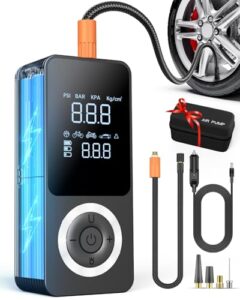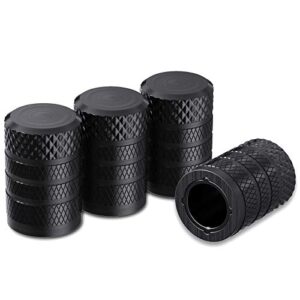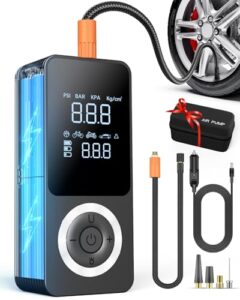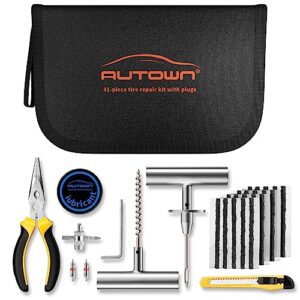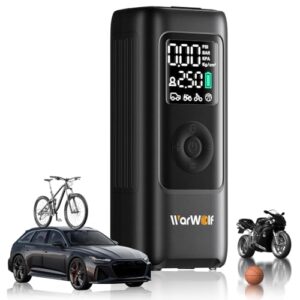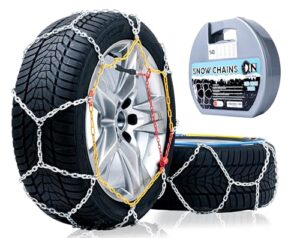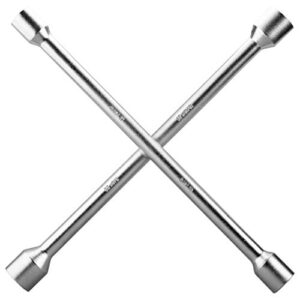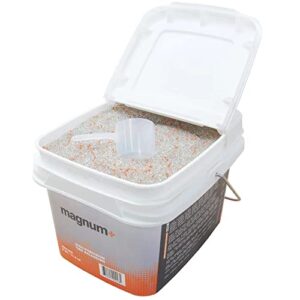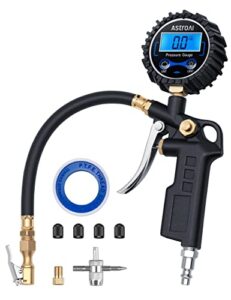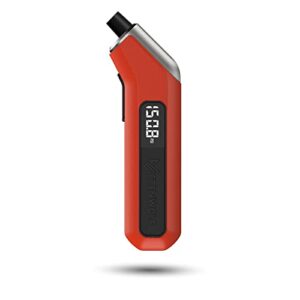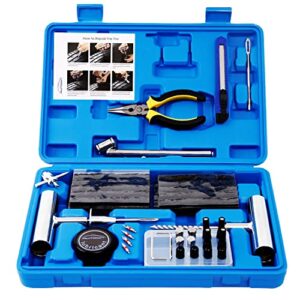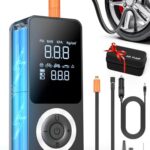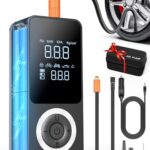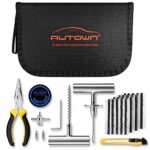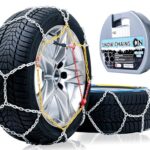If your tire blows out while driving, maintain a firm grip on the steering wheel and steer straight ahead. Gently ease off the accelerator and allow the vehicle to slow down before pulling over to a safe location.
Experiencing a tire blowout can be an alarming and dangerous situation on the road, but knowing the right steps to take can ensure your safety and the safety of other motorists. Keeping calm is crucial as it helps you to react both swiftly and effectively.
With over 11,000 tire-related crashes occurring annually, being prepared for such an unexpected event is essential for all drivers. The key is to avoid abrupt actions that could lead to loss of control, such as slamming on the brakes or abruptly turning the steering wheel. Instead, smooth, controlled movements are paramount. Once stopped, you can assess the situation, and if it’s safe, change the tire or seek professional assistance. This guide aims to give you clear directives to handle a blowout confidently, minimizing risk, and safeguarding all involved.
Initial Reaction To A Tire Blowout
The Initial Reaction to a Tire Blowout is crucial for your safety and that of other road users. A tire blowout can happen suddenly, transforming a normal drive into a tense situation. Knowing the right steps to take is essential. Stay with us as we guide you through this unexpected event.
Recognizing Blowout Signs
A loud boom, sudden vehicle vibration, and difficulty steering mark a tire blowout. You might also hear a flapping sound as the deflated tire hits the road. Identifying these signs quickly is vital.
Maintaining Calm
It’s easier said than done, but keeping calm is your best defense. Panic can lead to oversteering or harsh braking, making things worse. Focus on controlling the vehicle with smooth, steady actions.
- Don’t Slam on the Brakes: Braking hard can cause a loss of control. Instead, gently ease off the accelerator.
- Hold the Steering Wheel Firmly: Keep a tight grip to maintain direction and prevent the car from veering off.
- Gradually Slow Down: Let the car slow down naturally, then lightly apply the brakes when you’re under control.
- Pull Over Safely: Once slowed, signal and maneuver to a safe spot off the road.
Maintaining Vehicle Control
A tire blowout is a scary moment for any driver. Staying calm is vital. Knowing what to do helps you stay safe. Here is how to maintain control of your vehicle during a tire blowout.
Gripping The Steering Wheel Firmly
A firm grip keeps you in charge.
- Place both hands on the wheel.
- Keep your grip at 9 and 3 o’clock.
- Avoid jerky movements.
Steering To Stability
Control is the goal. Steer smoothly to keep your vehicle straight.
- Don’t slam on the brakes.
- Steer straight ahead.
- Slow down gradually.
Move to the side of the road when it’s safe. Then, call for help.
Adjusting Speed Post-blowout
Experiencing a tire blowout while driving can be a harrowing ordeal.
The critical moments post-blowout demand calm and precise actions, particularly when it comes to adjusting your vehicle’s speed.
Let’s look at the right steps to safely reduce speed and regain control.
Resisting The Brake Pedal
Keep calm and avoid the immediate urge to hit the brakes.
Slamming on the brakes can cause further loss of control.
Steady the steering wheel. Allow the car to slow down naturally.
Gradual Deceleration
Focus on decelerating gradually. Slight lifts from the accelerator help.
As the car slows, use gentle braking pressure if necessary.
Aim to pull over safely once the speed drops adequately.

Navigating To Safety
The terror of a tire blowout while driving requires quick, calm thinking. Your top priority: steer clear of danger. Keep calm. Focus on safety measures.
Selecting A Safe Pull-over Spot
Maintaining your car’s control is crucial. Grip the steering wheel firmly. Don’t slam the brakes. Ease your foot off the accelerator. Look for a spacious area to move towards.
- Avoid sharp turns. Aim for a straight path.
- Seek a level surface. Ensure your emergency stop is stable.
- Stay clear of traffic. Aim for the rightmost lane or a safe shoulder.
Using Indicators And Hazard Lights
Signaling is vital. It tells others that you’re having trouble. Activate your turn signal before moving to the side. Once safely stopped, turn on your hazard lights.
| Signal Early: | Let others anticipate your move. |
| Switch to Hazards: | Alert others once stopped. |
After Securing Safety
A tire blowout is a startling event. Your vehicle lurches, control feels compromised, and your heart races. Once you’ve managed to pull over safely and your heartbeat has settled, it’s time to assess the situation and take the next steps.
Evaluating The Situation
Safety remains your priority, even after your car is stationary. Keep your hazard lights blinking to alert passing vehicles. Before stepping out, confirm it’s safe to exit the vehicle. Should you find yourself on a busy highway, staying inside the car may be safer. Check your spare tire, if available, along with the tools necessary for a change.
Calling For Assistance
If the situation calls for help, don’t hesitate to call for assistance. Whether it’s road-side service, a towing company, or emergency services, reaching out promptly is crucial.
Here’s what to include in your call:
- Location
- Vehicle description
- Nature of the incident
Keep your phone charged and within reach for situations such as tire blowouts. Regular maintenance and check-ups can prevent incidents, but always be prepared for unexpected events on the road.

Preventative Measures For Future Trips
Exploring preventative measures before future trips can save lives and prevent stressful situations. This section focuses on key actions you can take to reduce the chances of a tire blowout:
Regular Tire Maintenance
Taking care of your tires is crucial for road safety. Follow these simple maintenance tips to keep your tires in good shape:
- Check tire pressure monthly, including the spare.
- Inspect tires for wear and damage regularly.
- Rotate tires as recommended in your vehicle’s manual.
- Get a professional tire alignment annually.
- Replace tires every six years, or sooner if needed.
Emergency Preparedness Training
Knowing what to do in an emergency can be a game-changer. Here are a few training tips:
- Practice changing a tire in a safe environment.
- Take a defensive driving course to learn emergency maneuvers.
- Keep an emergency kit in your vehicle at all times.
- Familiarize yourself with your vehicle’s handling and braking characteristics.
By implementing these strategies, you not only increase your safety but also boost your confidence on the road. Stay prepared and enjoy your journeys without worry.

Frequently Asked Questions
What Is The Safest Action To Take If A Tire Blows Out?
Maintain your speed, grip the wheel firmly, and steer straight ahead. Gradually slow down, then pull over to a safe location. Avoid slamming the brakes to prevent loss of control.
What To Do If Your Tire Pops In The Middle Of The Road?
Stay calm and grip the steering wheel firmly. Gradually reduce speed; avoid abrupt braking. Steer to a safe spot, away from traffic. Turn on hazard lights. Call for roadside assistance or change the tire, if safe.
How Far Can I Drive On A Blown Out Tire?
You should not drive on a blown-out tire. Doing so can cause further damage to your vehicle and is unsafe. Pull over immediately and replace the tire or call for assistance.
What To Do If Your Tire Blows Out And You Don T Have A Spare?
Keep calm and slowly ease your car to the roadside. Activate your hazard lights to alert other drivers. Call for roadside assistance or use a mobile tire repair service. Till help arrives, avoid driving to prevent rim damage and ensure safety.
Conclusion
Dealing with a tire blowout is daunting, but staying calm is crucial. Master the art of control, slow down gently, and find a safe stop. Remember, regular tire checks can prevent such incidents. Drive safely, and be prepared for the unpredictable—your peace of mind depends on it.




